Implant cases: Custom abutments
Not so long ago, our only option was to pick out an abutment from a catalogue. All brands of dental implants came with a selection of prefabricated parts to fit almost any situation. The catalogues still exist, but nowadays abutments are usually obtained in other ways. Instead of combing through a long list of sizes and angles, we literally build the perfect abutment for the patient.
We used to do this even before the advent of digital technologies, with cast-to abutments, which can still be found in the trusty catalogues and continue to be used in some cases today. The basic idea is simple: we start by covering the part in question with wax (or any other calcinable material); after mould is made, the wax is replaced with a dental alloy, resulting in an abutment custom-built for case at hand. Due to the manual labour involved, the implant connection being nearly always made from a noble metal, not to mention the abutment itself being made from an alloy, the process can be costlier, but the resulting part is top quality. This technique extends beyond the simple abutment. The cast-to abutment can also be integrated into the metal framework, which will then be covered with ceramic to obtain a one-piece crown or bridge with one or more access holes for the retaining screws.
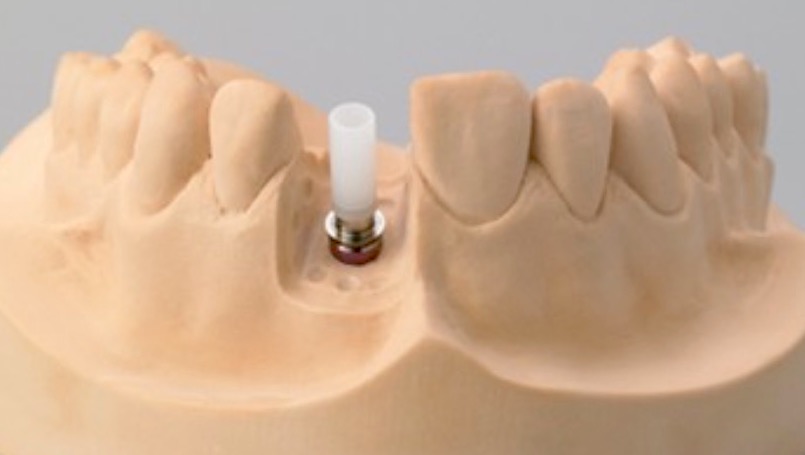
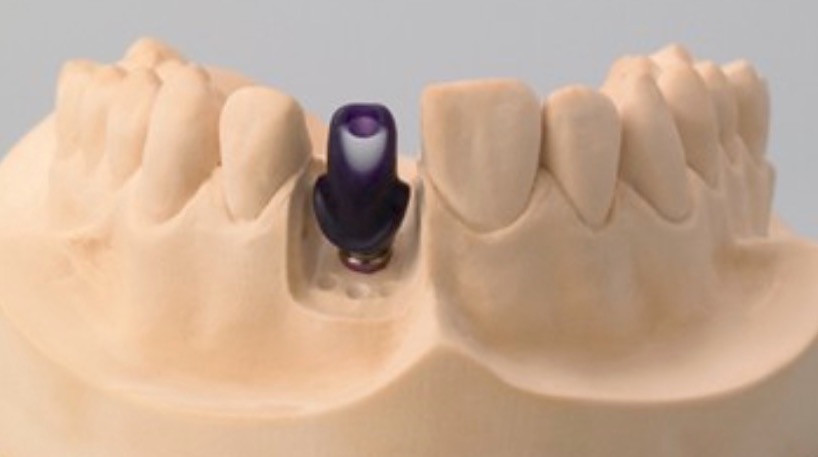
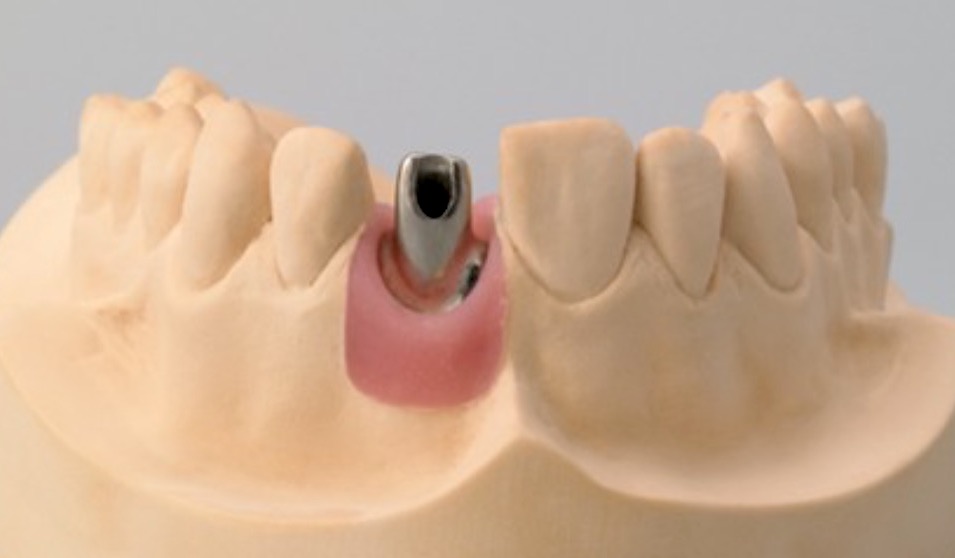
Today, we prefer to take 3D images of the position of the implant in the mouth, and then design a virtual abutment which will be made from titanium or zirconia.
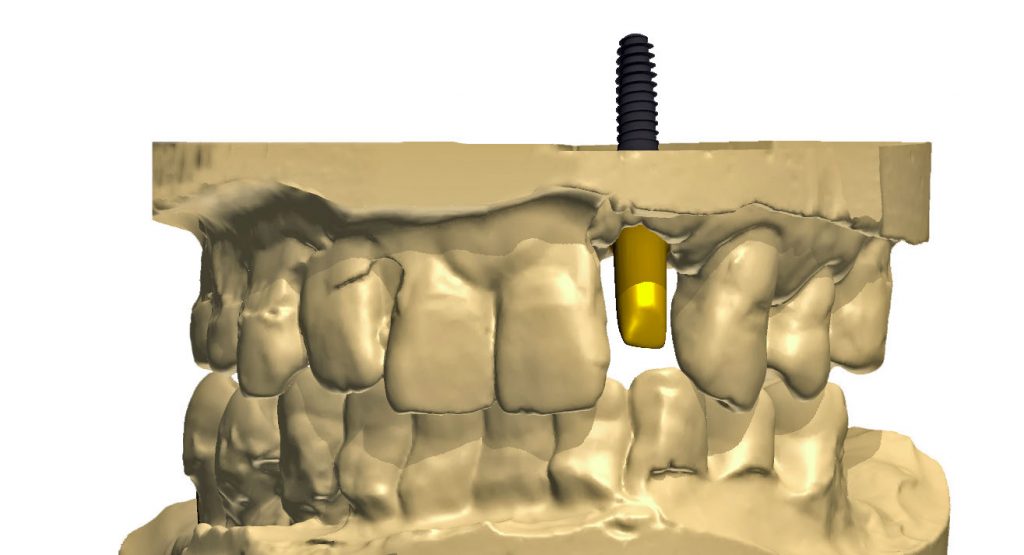
This method works quite well for full-crown cement-retained restorations. Once the custom abutment is received, we place a crown on it as though it were a prepared tooth.
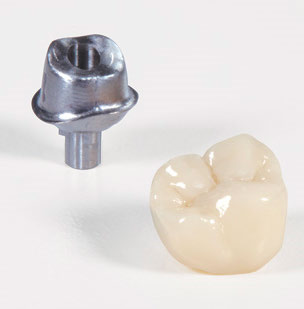
In cases where the practitioner prescribes a screw-retained restoration, there are different techniques to choose from for including an opening for the retaining screw. We can simply add an access hole to the crown and then cement it to the abutment.
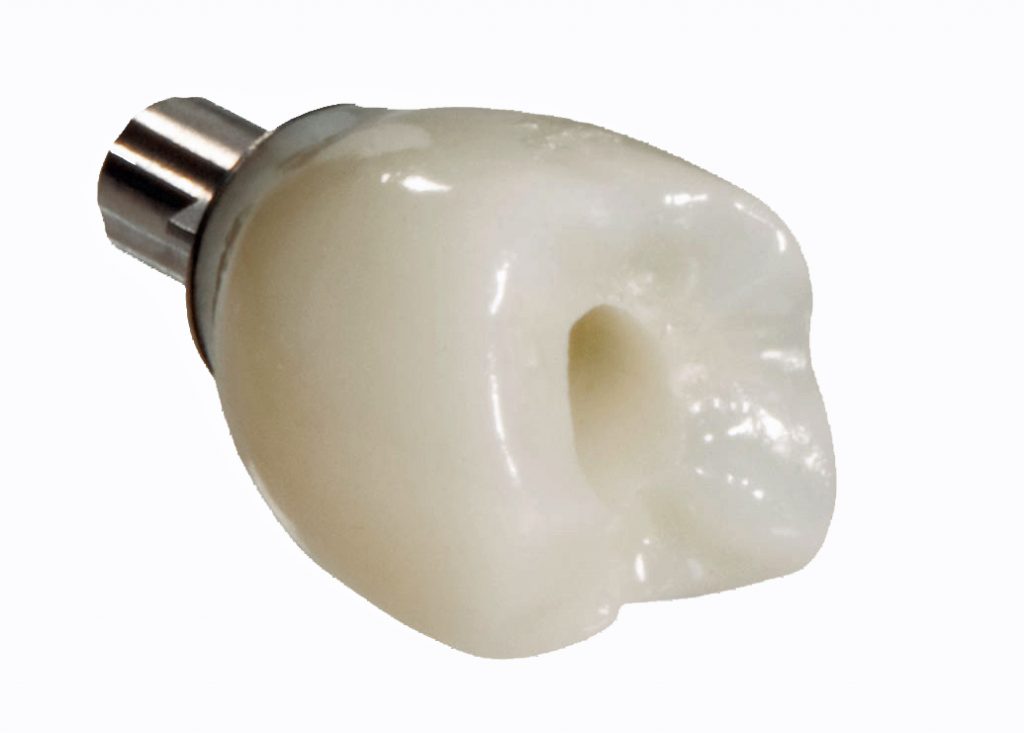
We can also design an abutment that closely resembles the shape of the desired tooth, with a homothetic reduction, which will be finished with an esthetic material. The final product is a crown that can be screwed onto the implant. The photo below on the left shows this type of abutment before finishing, and the one on the right shows a cross-section of a homothetic abutment. The darker area is the abutment itself, made of pure zirconia, and the exterior surface is a layer of esthetic ceramic. In this case, the connection with the implant itself is built into the zirconia.
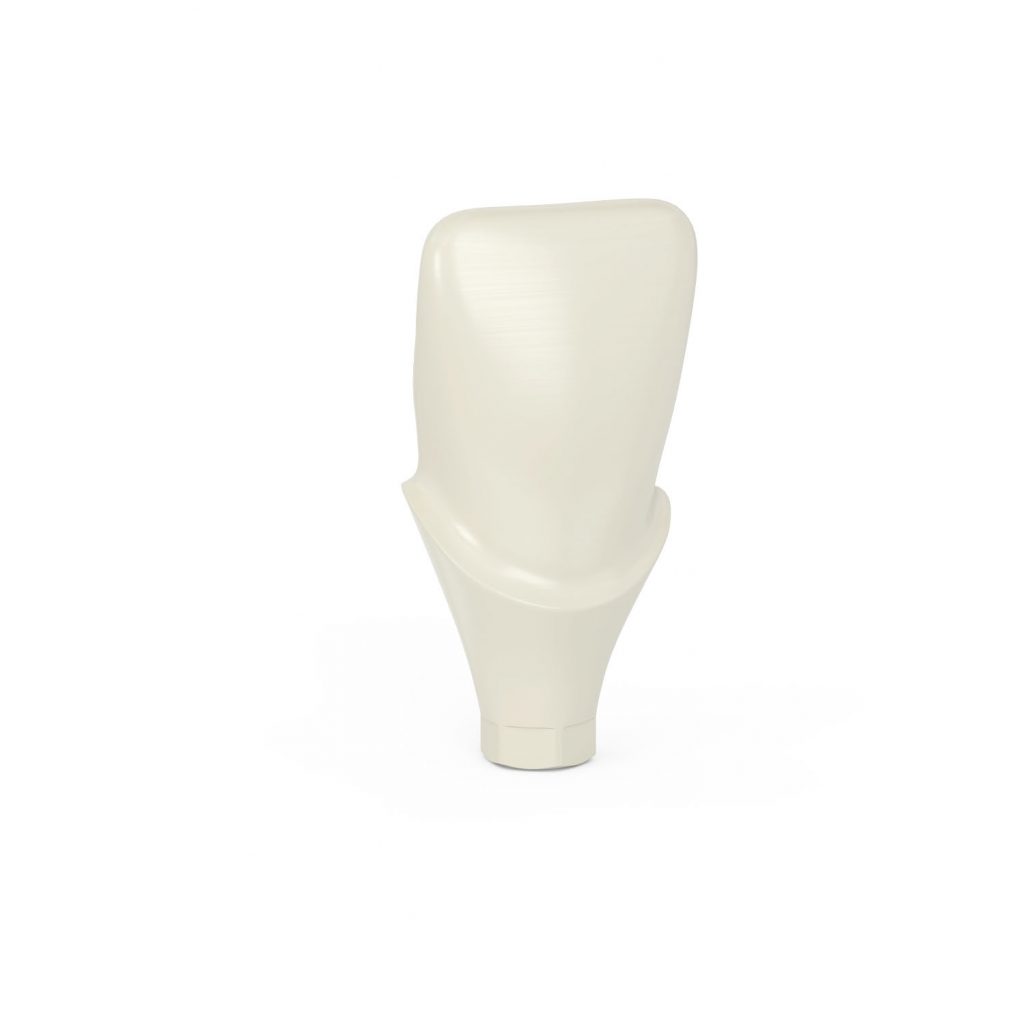
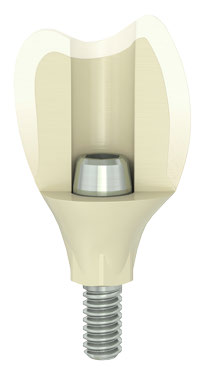
A crucial element of dental implant abutments is the connection, or the interface between the tooth and the implant. Because precision is extremely important here, most commercial solutions come with prefabricated connections. Digital milling machines capable of making implant connections with tolerances similar to the original products are complex, large and above all very expensive.
The custom abutments we can order from suppliers come with the connection built in, but we can also order just the connection itself, often called a titanium base, which will be glued into the finished crown or bridge in the lab.
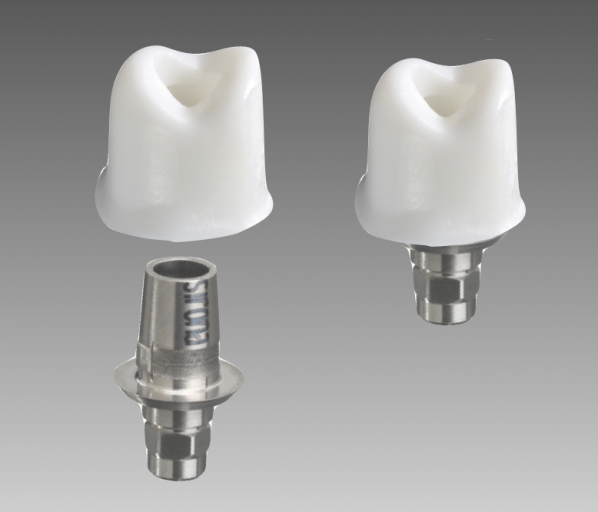
The options for custom abutments have continued to multiply as more and more digital manufacturing techniques become available in dental labs. Most dental implant manufacturers now offer custom abutments and titanium bases. You just need to know which combination will give you the best end result.





